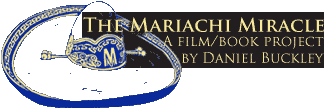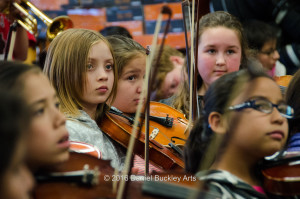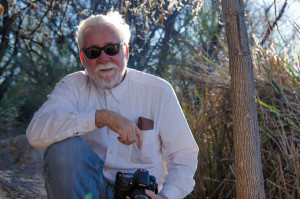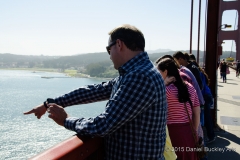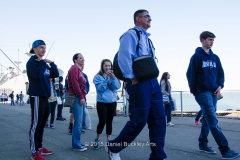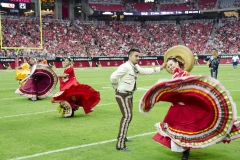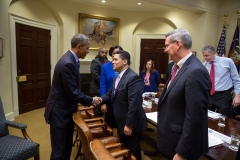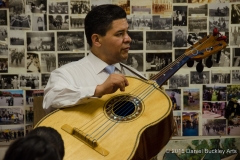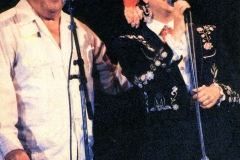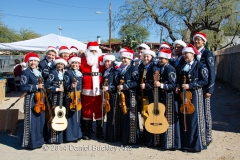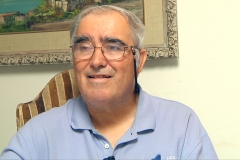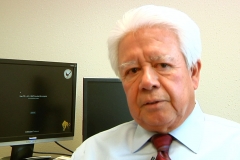THE MARIACHI MIRACLE (Click photos to enlarge)
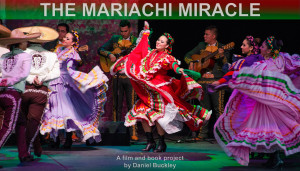 There’s a musical revolution catching like wildfire across America, becoming almost as ubiquitous as the Suzuki violin method.
There’s a musical revolution catching like wildfire across America, becoming almost as ubiquitous as the Suzuki violin method.
It’s the youth mariachi movement, riding on joyful and emotional layers of dancing rhythms and tuneful, harmonious music from the heart.
The mariachi has long been the soundtrack of life in Mexican culture from the cradle to the grave. But in places across America over the last 50 years, it has become something far deeper. It has become the sound of equality, economic prosperity, academic achievement, social change, political empowerment and artistic prowess.
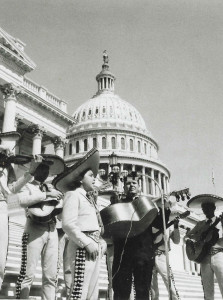
Father Charles Rourke and his group, Maraichi Los Changuitos Feos, perform on the steps of the U.S. Capitol in the 1960s.
- Families once put off from schools by memories of punishment for speaking Spanish now are intimately involved in shaping school policy.
- Graduation rates have risen dramatically, gang involvement has dropped and college matriculation is rising sharply.
- Hispanics told time and again they could not pursue certain professions proved that they too could become top flight scientists, engineers, teachers, administrators, community leaders, board members, business leaders and more.
The Mariachi Miracle is a film and book project documenting the impact of the youth mariachi and folklórico dance movement on Tucson, Arizona. Tucson is just one example of a cultural groundswell that is taking root among Hispanic populations of all sorts in schools across the nation. And with Hispanics rapidly becoming the chief demographic in American public schools, it is increasingly being viewed as among the most promising strategies for enhancing educational potential across the nation.
In just a half century, the city of Tucson has transformed from a racially segregated community intent on demolishing all traces of its Hispanic roots to a city where the mariachi and the folklórico dancer are as much iconic symbols of the community as the saguaro cactus.
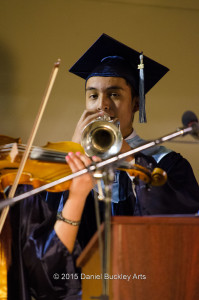
Trumpeter Fernamdo Manzano of Mariachi Aztlan performs at his graduation ceremony at Pueblo High School in 2015.
Tucson was among the first cities to create such programs, originally as vehicles to a college education for Mexican American youth. Over time it led to the advent of the Tucson International Mariachi Conference, Singer Linda Ronstadt’s platinum-selling discs of mariachi ranchera standards, the proliferation of numerous private and school-based programs, and the birth of curriculum-based mariachi and folklórico dance programs in schools throughout multiple Tucson school districts. In addition Tucson mariachi teachers seeded programs in Las Vegas, San Francisco, Chicago, San Diego and other cities.
At the school level these programs have become proven agents of academic and community success. But the impact of these programs also yielded greater equality for women, Native Americans and LGBT members, tangible movement against institutional racism in the schools, and the fostering a more cohesive and civil community at large.
Beyond academic metrics, such programs give students self confidence, a sense of the world around them, and such 21st century workplace skills as teamwork, discipline, negotiating skills, enhanced mathematical and reasoning skills, as well as critical thinking and language skills. The graduates of these programs are already producing new professionals of all sorts with the earning power, bilingual communication skills and leadership savvy to take their place in the building of America in the 21st century.
It’s a grassroots, achievement begun in the Chicano community. By turning to the culture to find solutions to multiple pressing issues, those pioneers evolved innovative ways to manifest social justice, and achieve economic and educational parity. This is a thoroughly American success story that has yet to be told in a comprehensive way. With the rapid proliferation of such programs in public schools nationwide, this movement holds the potential to similarly transform the nation. This film and book will become a resource to pave the way for this surge of activity.
Producer/director Daniel Buckley has a 35-plus year history of covering the mariachi movement in Tucson and America for newspapers and other periodicals. Inducted into the Tucson International Mariachi Conference’s Mariachi Hall of Fame in 2013, he is also the recipient of the Artist of the Year award at the 2014 Arizona Governor’s Arts Awards and is an award winning journalist, artist, composer and documentary filmmaker.
More than a film and book, the project is a community resource to be shared with the world. Transcripts of all interviews for the film will be made available to the public for research through the Arizona Historical Society, the Library of Congress and the University of Arizona Library’s Special Collections Division upon the film’s completion, slated for 2018.
